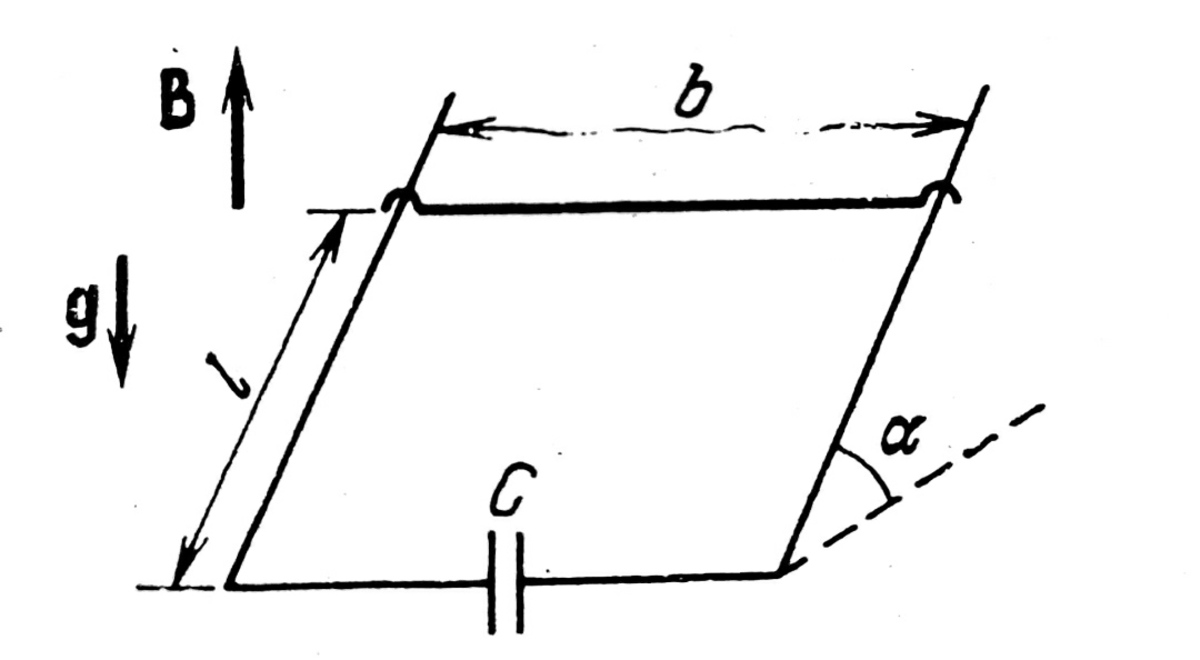ElectroMechanics and Capacitor
A metal jumper of mass
can slide without friction along two parallel metal guides directed at an angle
to the horizontal and separated by a distance
. The guides are connected at the bottom through an uncharged capacitor of capacitance
, and the entire system is places in an upward magnetic field of induction
. At the initial moment, the jumper is held at a distance
from the foot of the hump.
 What will be it's velocity
at the foot
What will be it's velocity
at the foot
Answer comes in the form of
Type your answer as
Details and Assumptions
1)
The resistance of the guides and the jumper should be neglected.
2)
all are postive.
The problem is not original.
I will happy if anyone will upgrade this problem.
The answer is 9.5.
This section requires Javascript.
You are seeing this because something didn't load right. We suggest you, (a) try
refreshing the page, (b) enabling javascript if it is disabled on your browser and,
finally, (c)
loading the
non-javascript version of this page
. We're sorry about the hassle.
krotov 3.53. this problem can also be solved using conservation of energy.